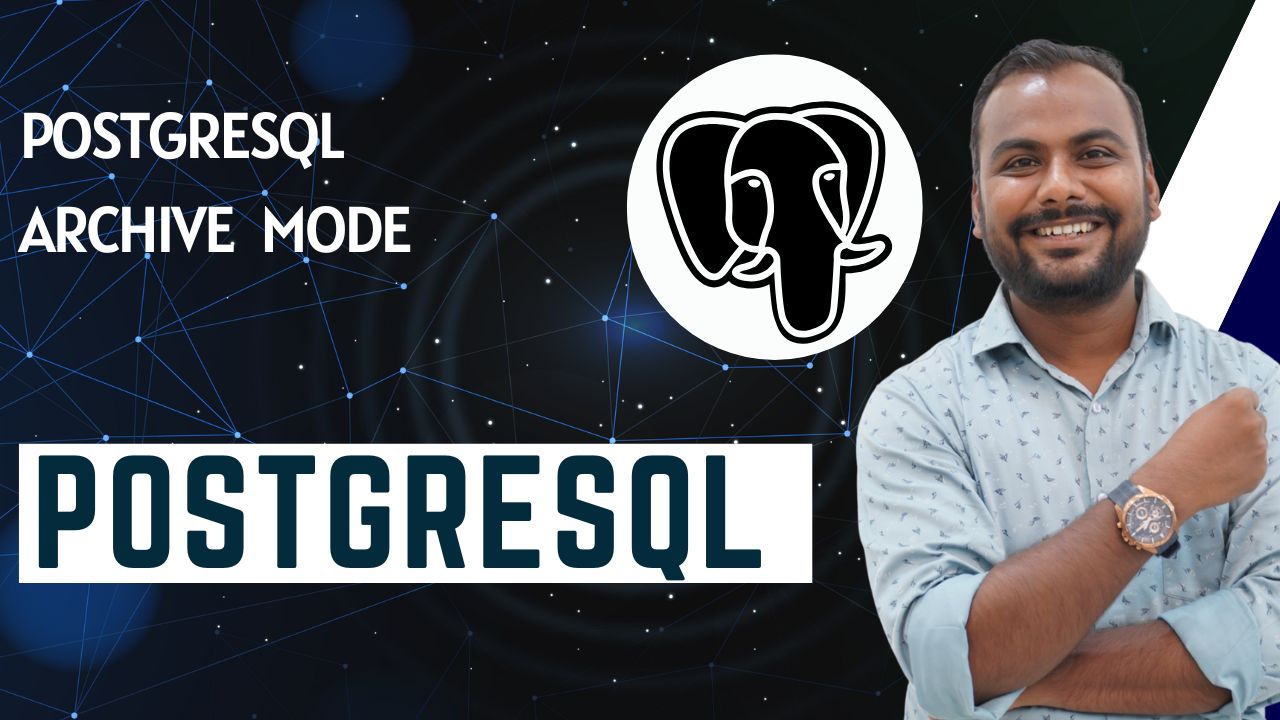PostgreSQL Archive Mode
PostgreSQL Archive Mode Configuration – A Complete Guide
Database reliability depends on how well you manage your backups and recovery strategy. One of the most powerful features in PostgreSQL for ensuring data durability is Archive Mode.
If you’re pursuing a PostgreSQL Course, planning to Learn PostgreSQL Online, or aspiring to become a PostgreSQL DBA, understanding archive mode configuration is a crucial step toward mastering PostgreSQL administration.
What Is Archive Mode in PostgreSQL?
Archive Mode is a PostgreSQL feature that enables continuous archiving of WAL (Write-Ahead Log) files. These logs record every change made to the database, ensuring that data can be restored even after a crash or hardware failure.
When archive mode is enabled, PostgreSQL automatically saves completed WAL segments to a secure archive location — local disk, network storage, or cloud storage. This archived data allows point-in-time recovery (PITR), meaning you can restore the database to any specific moment before an issue occurred.
How Archive Mode Works
In PostgreSQL, every database change first gets recorded in the WAL log. Once a WAL file is filled, it’s archived for long-term storage if archive mode is active.
This process follows three key steps:
1️⃣ Write – PostgreSQL writes data changes to WAL files in real time.
2️⃣ Switch – When a WAL file is full, PostgreSQL switches to the next file.
3️⃣ Archive – The filled WAL file is copied to the archive destination defined in the configuration.
This mechanism ensures you never lose committed transactions, even during system outages.
Steps to Enable Archive Mode in PostgreSQL
To configure Archive Mode PostgreSQL, follow these steps:
1️⃣ Edit postgresql.conf
Open your PostgreSQL configuration file and modify the following parameters:
2️⃣ Restart PostgreSQL Service
After saving the configuration, restart PostgreSQL to apply the changes:
3️⃣ Verify Archive Configuration
Run the following SQL command to check if the archive mode is active:
If configured correctly, PostgreSQL will begin saving completed WAL files to your archive directory.
Best Practices for Archive Mode Management
To keep your PostgreSQL environment reliable and efficient:
✅ Store archived WAL files on a separate disk or cloud storage.
✅ Regularly monitor archive space to prevent storage overload.
✅ Use automated cleanup policies for old archives.
✅ Combine archive mode with base backups for complete disaster recovery.
These steps are essential for anyone aiming to Learn PostgreSQL DBA and build strong database management practices.
Real-World Use Case
Enterprises use Archive Mode for disaster recovery, replication setup, and compliance requirements.
For example, in financial systems or healthcare databases where every transaction matters, archive mode ensures no data is lost and recovery is always possible.
Learning how to implement and test this feature is a core skill covered in most PostgreSQL Courses and advanced DBA training programs.
Why You Should Learn Archive Mode
Mastering Archive Mode not only strengthens your backup strategy but also prepares you for real-world PostgreSQL DBA challenges.
If you’re enrolled in a PostgreSQL Course or exploring PostgreSQL Learn Online programs, setting up archive mode is an excellent hands-on exercise to practice recovery and data integrity concepts.
By the end of your training, you’ll understand how to configure, automate, and optimize PostgreSQL archiving for enterprise-level reliability.
Conclusion
Archive Mode in PostgreSQL is more than just a backup feature — it’s the foundation of a reliable recovery strategy. Whether you’re learning through a PostgreSQL Course, practicing via a PostgreSQL Learn Online module, or advancing your skills to Learn PostgreSQL DBA, mastering this configuration ensures your data remains safe, consistent, and recoverable at all times.
Continuous learning and hands-on implementation are key to becoming a confident PostgreSQL professional.
At Learnomate Technologies, we make sure you not only understand such cutting-edge features but also know how to implement them in real-world projects. Whether you’re a beginner looking to break into the database world or an experienced professional upgrading your skillset—we’ve got your back with the most practical, hands-on training in Oracle technologies.








Let’s keep learning, exploring, and growing together. Because staying curious is the first step to staying ahead.
Happy learning!
ANKUSH


